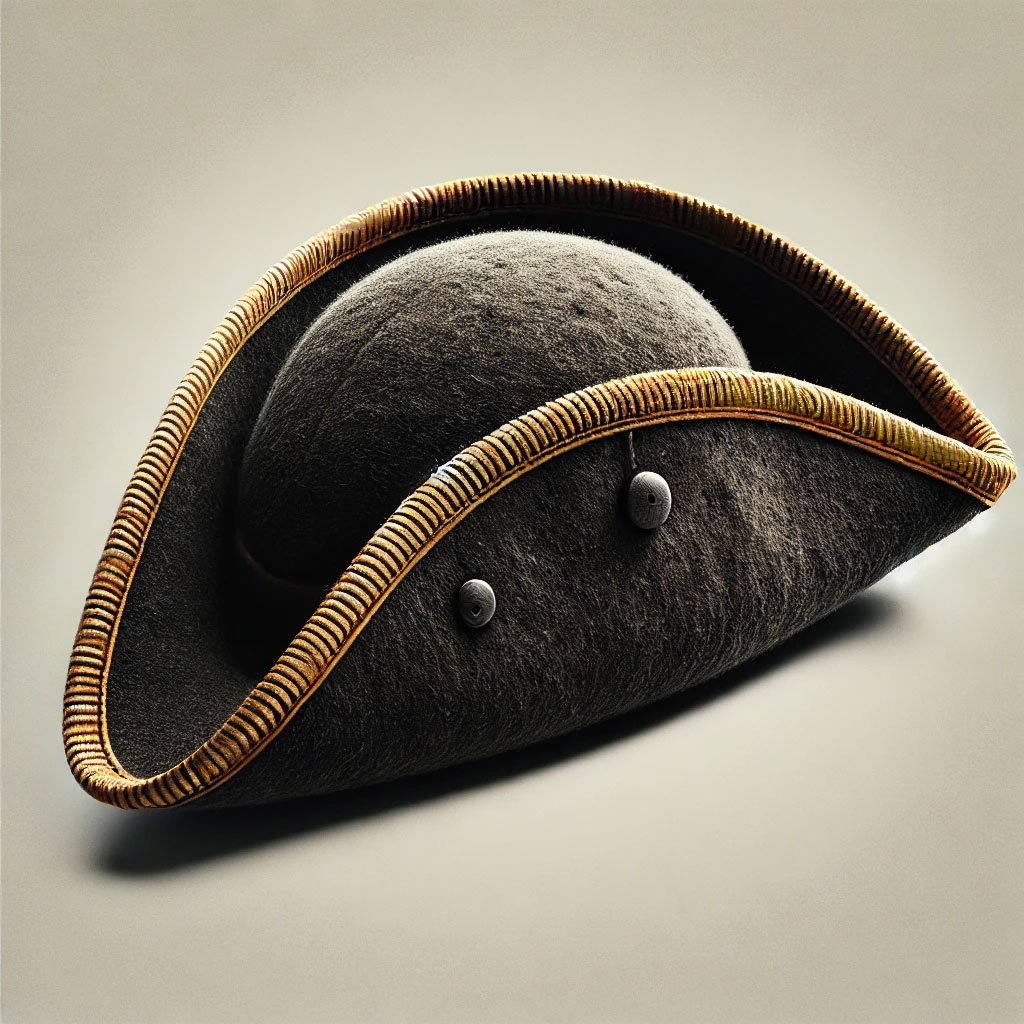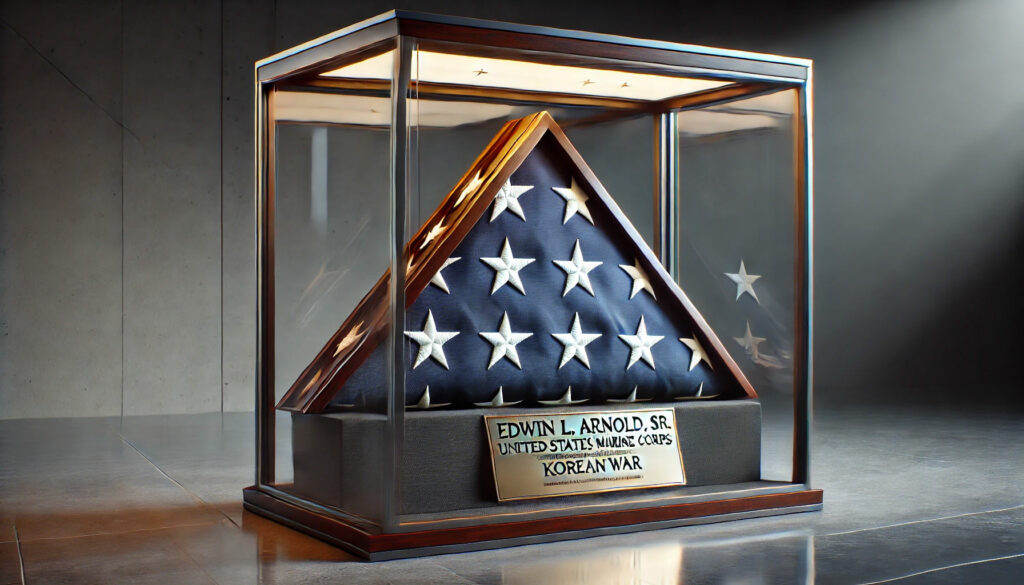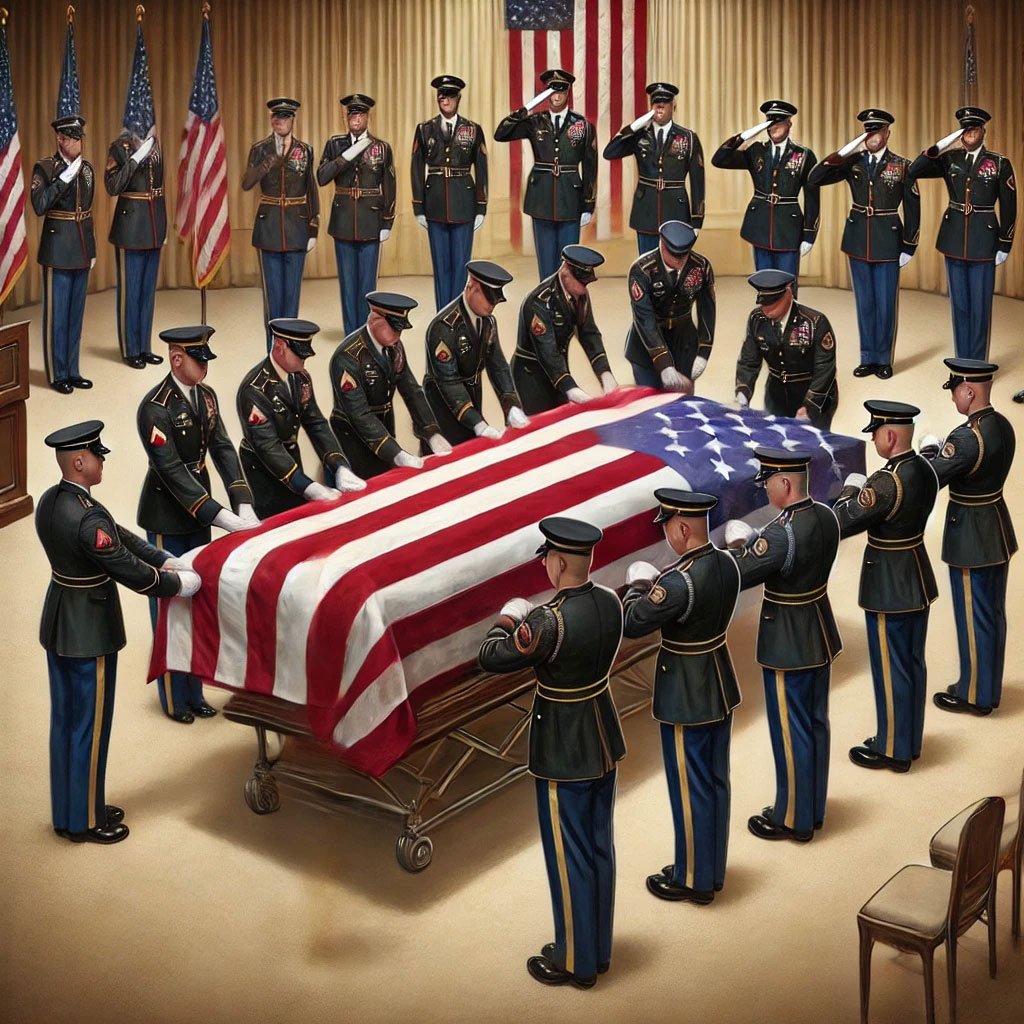United States military funerals are solemn ceremonies that honor the service and sacrifice of military personnel who have died in the line of duty or after completing their service. These funerals reflect the nation’s respect and gratitude for the individual’s commitment to defending the country and upholding its values. Each element of the military funeral is steeped in tradition and meaning, from the flag-draped coffin to the ceremonial folding of the American flag.
Significance
Military funerals are conducted with great dignity and respect, signifying the ultimate honor that the nation can bestow upon its fallen warriors. The ceremony is a tribute not only to the individual but also to the values of duty, honor, and sacrifice that the military represents. For the next of kin, it serves as both a closure and a deeply symbolic gesture, demonstrating the nation’s gratitude for the deceased’s service.
Key Elements of a Military Funeral
- Casket or Urn Draped with the U.S. Flag The flag symbolizes the service and sacrifice made by the deceased on behalf of the country. It covers the casket or urn from the time it leaves the funeral home until it is folded and presented to the next of kin. It is typically placed with the blue field of stars over the left shoulder of the deceased, representing honor and service.
- Honor Guard A military honor guard is assigned to each military funeral. The honor guard may consist of members from the service branch in which the deceased served. They oversee every aspect of the ceremony, including flag handling, presenting arms, and standing vigil.
- Three-Volley Salute A rifle party of typically seven service members fires three volleys in unison. The three volleys represent duty, honor, and sacrifice. This tradition comes from an old battlefield custom where the firing of three volleys signaled that the dead had been cleared and the battle could resume.
- Taps “Taps,” a 24-note bugle call, is played during the funeral to signify the final resting place of the deceased. It is a deeply emotional moment, symbolizing the soldier’s final “lights out” and the peaceful rest of the soul. It is often the most poignant part of the ceremony.
- Folding of the Flag The American flag is carefully removed from the casket and folded into a precise triangular shape by the honor guard. The 13 folds of the flag are symbolic, each with its own meaning tied to life, honor, and patriotism:
13 Folds of the Flag: Meaning
- First Fold
The first fold symbolizes life. - Second Fold
The second fold represents eternal life. - Third Fold
This fold is made in honor and remembrance of the veteran who has given a portion of their life for the defense of the country. - Fourth Fold
This fold signifies our weaker nature, acknowledging that we trust in God for guidance in times of peace as well as in war. - Fifth Fold
This fold is a tribute to the United States. It stands for the country that defends the rights of its citizens. - Sixth Fold
The sixth fold represents the hearts of the people. It is where their allegiance lies and where their flag should be held close. - Seventh Fold
The seventh fold represents a tribute to the Armed Forces of the country, acknowledging their role in protecting the country. - Eighth Fold
This fold is a tribute to the one who entered into the shadow of death, so that others might see the light of day. - Ninth Fold
The ninth fold represents a tribute to womanhood. Mothers, wives, and daughters have made significant sacrifices in the lives of veterans. - Tenth Fold
This fold is a tribute to fatherhood, recognizing fathers who also contribute greatly by supporting their children to serve their country. - Eleventh Fold
This fold symbolizes the lower portion of the seal of King David and King Solomon, reminding us of the faith and sacrifices of religious groups. - Twelfth Fold
The twelfth fold represents an emblem of eternity and glorifies those who believe in eternal life. - Thirteenth Fold
The last fold, when the flag is completely folded, the stars are uppermost, symbolizing our nation’s motto, “In God We Trust.”

The folding of the flag into a triangle represents the tricorn hats worn by the soldiers during the American Revolutionary War, symbolizing the connection between the past and present service members.

Once folded, only the blue field of stars is visible, symbolizing the unity of the nation. The triangular shape is reminiscent of the tricorn hats worn by Revolutionary War soldiers, linking the modern service member to the earliest fighters for American freedom. - First Fold
- Presentation of the Flag After the flag is folded, it is presented to the next of kin, usually a spouse, parent, or child of the deceased. The presentation is made with great formality, and the presenting officer or NCO kneels before the next of kin and speaks words to the effect of:
“On behalf of the President of the United States, the United States [Army, Navy, Air Force, Marine Corps, or Coast Guard], and a grateful nation, please accept this flag as a symbol of our appreciation for your loved one’s honorable and faithful service.”
This act represents the gratitude of the nation for the service member’s duty and dedication to the country.
- Salutes Military members in attendance, including the honor guard, offer salutes at various points in the ceremony, particularly when “Taps” is played, during the three-volley salute, and when the flag is presented. Salutes are a mark of respect and are typically given by active-duty members and veterans who are in uniform.
- Burial and Honors If the service member is being buried at a national cemetery, such as Arlington National Cemetery, full military honors may include a ceremonial caisson (horse-drawn carriage), a military band, and a procession of family and fellow service members. The service member is laid to rest in a setting that reflects the highest degree of honor and respect.
Variations by Rank and Circumstances
The extent of the honors rendered depends on the rank of the deceased and the nature of their service. For instance:
- Full Honors: Generally reserved for high-ranking officers or those who died in combat, full honors include the full complement of the honor guard, a band, a riderless horse for Army and Marine officers, and other elements like the caisson procession.
- Standard Honors: This includes a two-person honor guard to fold and present the flag and play “Taps.”
- Flag Presentation Only: Veterans who may not qualify for full honors still receive the honor of the flag-draped coffin and the flag presentation.
Impact on the Family
For the family, the ceremony is a deeply emotional experience, representing the final act of national recognition for their loved one’s service. The presentation of the folded flag serves as a lasting token of the deceased’s sacrifice and the nation’s appreciation. Many families hold on to this flag as a cherished heirloom.
Conclusion
U.S. military funerals are profoundly significant, filled with symbols of honor, tradition, and respect. Every action, from the folding of the flag to the firing of the volleys, serves to recognize the fallen service member’s duty to the country. The ceremony allows the family and the nation to say farewell to those who defended the United States with their lives.

